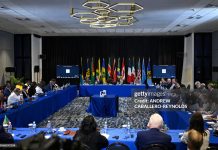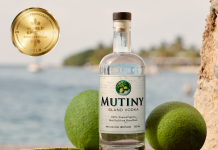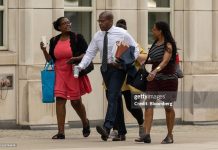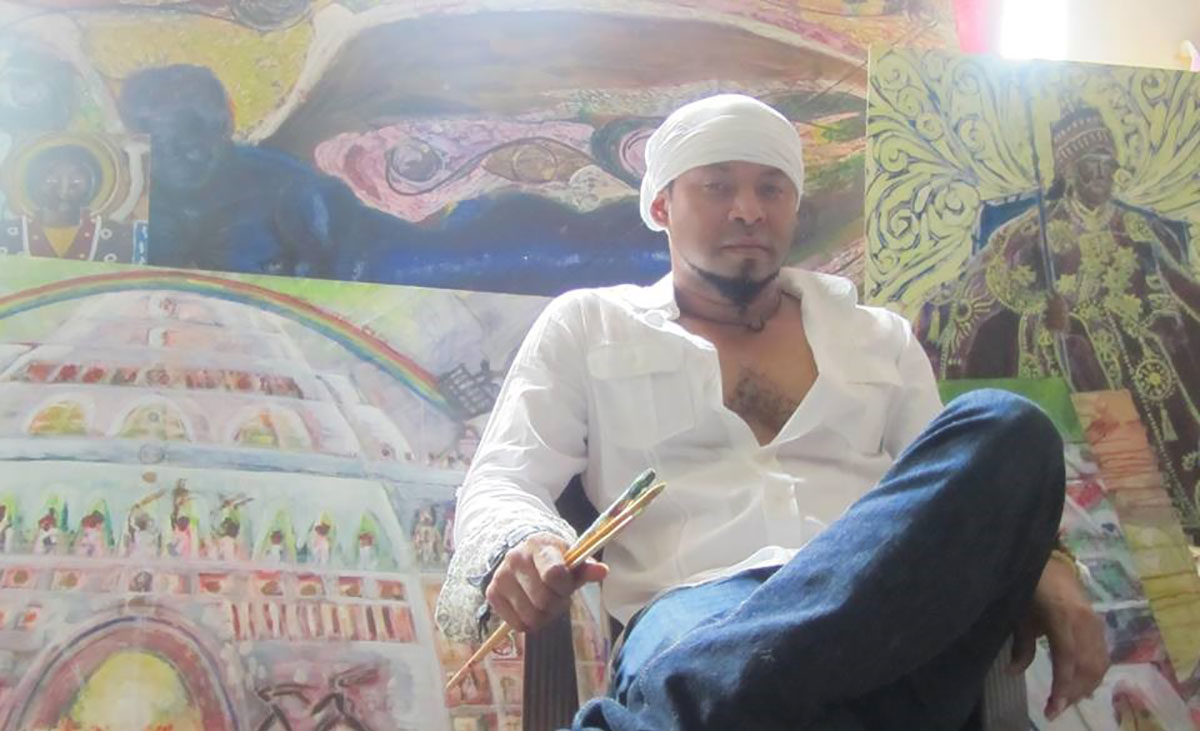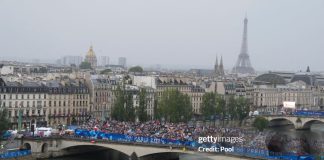Special to News Americas
News Americas, PORT-OF-SPAIN, Trinidad, Weds. Mar. 23, 2022: Trinidad and Tobago-born Rubadiri Victor is a purist when it comes to culture and the arts.
When he sacrificed seventeen years of his life without the paint brush and his blue strokes of expression, he was fighting for that self-same creative community to be respected, for the sanctity of sacred institutions to be preserved, for Heritage Sites to be kept untarnished, and for the preservation of everything Arts and Culture in his native Caribbean country.
His art is a fusion of fine, folk, pop, and indigenous carnival art- with a touch of abstraction wrapped up in magical realism- all brought together to reflect the great rainbow nation of Trinidad and Tobago and the Caribbean region. The work dreams new possibilities, raises new and old icons, and reflects fragments of where we as a people have fallen short.
The 51-year-old is an art man, a spirit man, an educator, a man conscious of divinity – who projects his passion from his heart. Many in his field of work say he is an emotional man, very in touch with his feminine side.
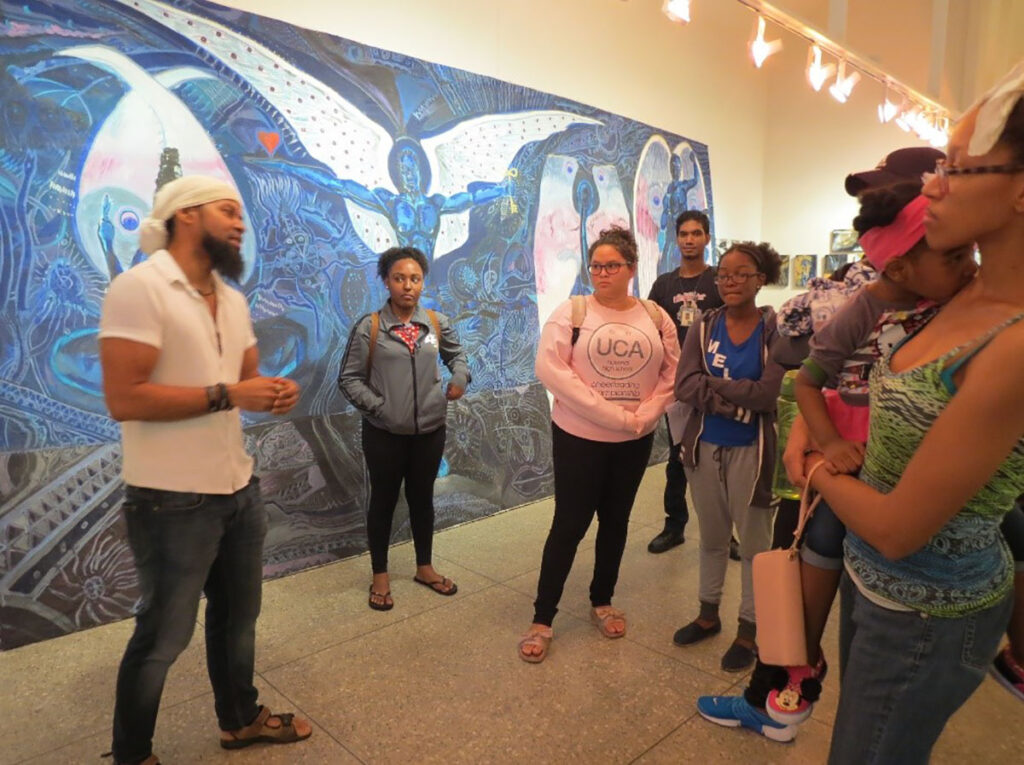
Rubadiri continues to swim against rough tides in his home country in his preferred industry of work and creation. However, his love for the Arts has shielded him, allowing him to trump the struggles he has had to endure preaching and showing the value of the Creative Industries to nation building. He has been walking that lonely road for a long time, dreaming about his vision for cultural spaces ‘for de youths dem’, grappling with finances, rich in intellect and a passionate love for the arts.
“The point of working in a fine art medium like painting is to make permanent signifiers and power objects that you want placed in spaces to generate certain kinds of energies to transform people. They are spells,” Rubadiri told News Americas. “Certain ones you create specifically for public spaces, where as, many people as possible can interact with them. Those usually are the massive pieces- those kinds of objects.”
His painting for instance, ‘Build the Temples for the Youths Dem to Enter,’ appeared to him in a vision, days after his exhibition ended in 2000.
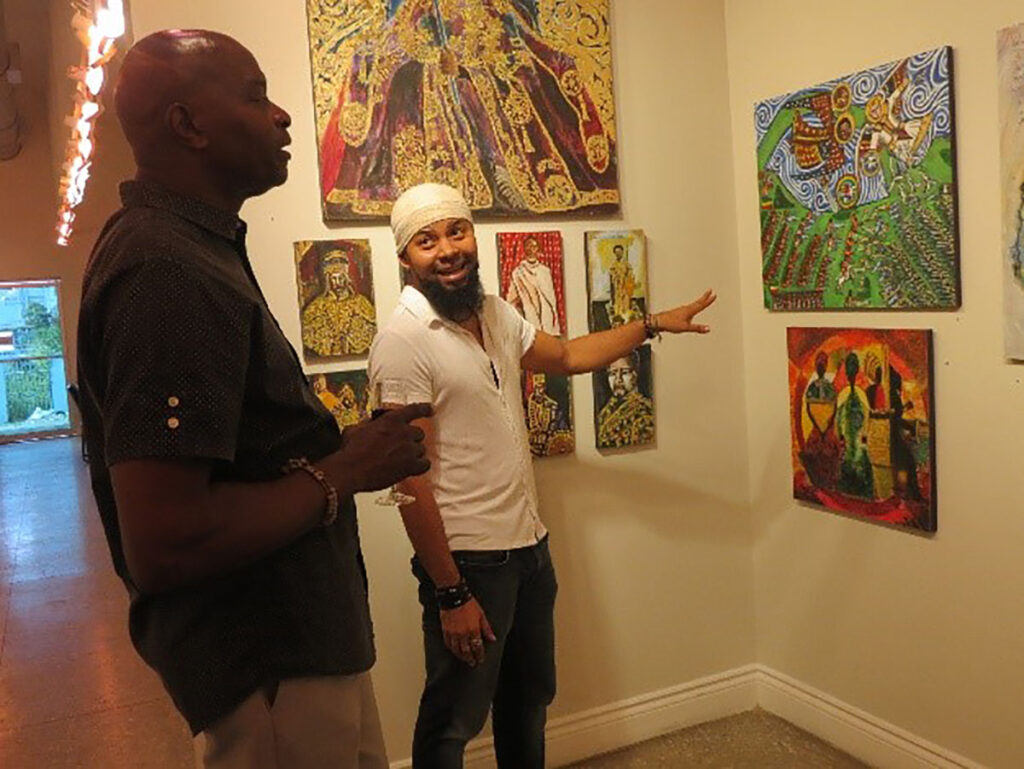
“I saw the painting as you see it now… I began 101 paintings for that exhibition,” he related. “The image and the words ‘Build the Temple for the Youths Them to Enter’ came like a beam, like a lightning bolt. As it came, I was like… Ok. That’s what I’m supposed to do next.”
He continued: “I obediently wrote down the words and I sketched the image. What happens after that is, all of a sudden, all the other images start to tumble out. You start to see all the other paintings that are supposed to happen, so I started to see these initiation ceremonies to accompany the Temples, newer Caribbean Guardian Angels, stuff like that. It begins with Intuition and then you begin to intellectualize, research, approach the work scientifically. But it begins in spirit. I was obsessed with it. But then, within a year, I abandoned the entire exhibition to become an activist.”
Layers and layers of passion, evidently flow from his mostly blue toned, calm and beautiful paintings.
One of those who engaged the arts and cultural battles with him remember Rubadiri walking from the capital city, Port of Spain to his home in Carenage, with his bag of work and ideas thrown over his shoulders, seemingly talking to himself.
One could not tell at the time if Rubadiri was just an artist in love with the way his mind works, mad, or if the Orisha devotee and spirit man was having conversations with the deities as some practicing Orisha folks will say. Could have been all three.
That was over fifteen years ago. What we are seeing now, over fifteen years later, is the mind of Rubadiri demonstrated in a splendid art exhibition over 77 canvases, a spiritual being who has grown through the Orisha ranks. Today some even call him Baba.
He laughs at the person’s recollection of him talking to himself: “Perception is a helluva thing. Lol. I was probably singing to myself. Working on a new song.’’
Out of respect for other people’s religious and spiritual beliefs, Rubadiri does not foist his spirituality or religion on others. Instead, he spends his art and his time in activism trying to get elites and others to see the value in preserving indigenous Legacy and building spaces for people to immerse themselves in local Legacies or to get involved in the Arts and Culture.
As head of the Artists Coalition of Trinidad and Tobago (ACTT), Rubadiri turned his back on a lucrative burgeoning artistic career and risked the dirt of sacrifice, burying his dream as a painter and multi-artist in 8 mediums to brave the high winds of capitalism trying to sell the idealistic concept of people with money pumping their millions into the creative sector to help create a better world. And trying to get governments in this energy rich twin isle Republic of Trinidad and Tobago to see the value in investing in the creative spaces as part of a diversification plan- away from oil and gas the country’s main revenue earner- a long talked about ideal. Rubadiri has been doing this for the past seventeen years (22 years). A sacrifice that saw him put down his art tools in every medium and almost relinquish everything he had to do battle against the local political and capitalist system that threatened many communities and the life of the Arts.
The Consequences
Certainly, there is the question of how seventeen years of activism and ‘fighting the system’ may have impacted the livelihood of this artist.
“Obviously, I’ve impoverished my family beyond belief, you know. I’ve sacrificed beyond the physical… you know,” he added. “I’ve changed the course of my family’s life for a generation by that decision – but it was what had to be done. There was no other way. The traditions which I hold dear, which this country holds dear, were in jeopardy and they needed a champion, and nobody else was going to do it. But I am also the second generation in my family to sacrifice in this way. My father sacrificed for this country to fight for reform too – and met with the same type of victimization.”
Rubadiri the spirit man
Putting wings on Caribbean consciousness, Rubadiri the spiritual man paints images he refers to as Caribbean Arch Angels.
“I created a series of beings called the Crucial Arch Angels. I even wrote a song about them. They are contemporary Caribbean Arch Angels concerned with reparative Historical Action,” says the artists. “There is a ‘The Angel of Abundance Collecting the Wealth to Re-distribute it Equitably’. There is ‘The Angel of Due Vengeance…’ I just present what comes to me, as it comes to me. It’s sent to me. I believe that divinity has all kinds of faces, necessarily. As the oldest people, obviously there are Black sacred faces. There’s a Black Godhead. God is Black. As well as She is Indian, as well as She is Chinese, as well as She is none of the above. As well as She is all of the above…”
During this interview, the artist points to his chest in the area of his heart and says: “I believe there are a number of different forces, between supreme divinity and us here… That there are all kinds of different intelligences and forces that are alive and are here to be conversed with, that guide and protect us. Elemental forces, forces of Principle. And they must be treated with respect. They have revealed themselves to people at different points in time in history. I am not saying anything that is not already known. This is what the oldest Peoples on the planet believe. I’m no prophet or any such thing but I see these beings (the Angels in the paintings). Yes, I see them and so um, yeah, these are what I see… I hear the songs in my dreams, I see the screenplays and the movies. I see the book. I see the images on the canvas before it is bought and stretched. I obey.”
“Like when I saw this picture, that image there- that is what I saw (a strange jumping figure in the ‘Build the Temples’ painting)… As soon as it came to my head I sketched the characters. I sketched that weird character poking out from the left hand side of that painting… I don’t understand him. I don’t know who the hell he is. Lol.,” he added. “What I mean is, he’s kinda strange, a kinda wacky kind of character, but… that is how it was sent to me and there must be some reason it was sent to be like that. And one thing I know, as an artist and as a spiritual person, is to get out of the way of what is sent to you by the Divine. So when your heart, your intuition, your spirit tells you something, even though intellectually you might say ‘no’, or whatever whatever, or other people say ‘no’ and whatever whatever, it’s like you need to not listen to any of those other voices, you just listen to your Heart. Listen to your Intuition. Listen to that thing, because it is that thing that is leading you towards your Best Self.”
This vocal artist has a value for life, a deep appreciation of Elders, and humility towards those who have built institutions for generations to benefit. He is a stalwart and defender of those institutions and heroes. Hence his humble reference to iconic painter and artist, Leroy Clarke. A reflection of his adoration for the “Golden Age generation.”
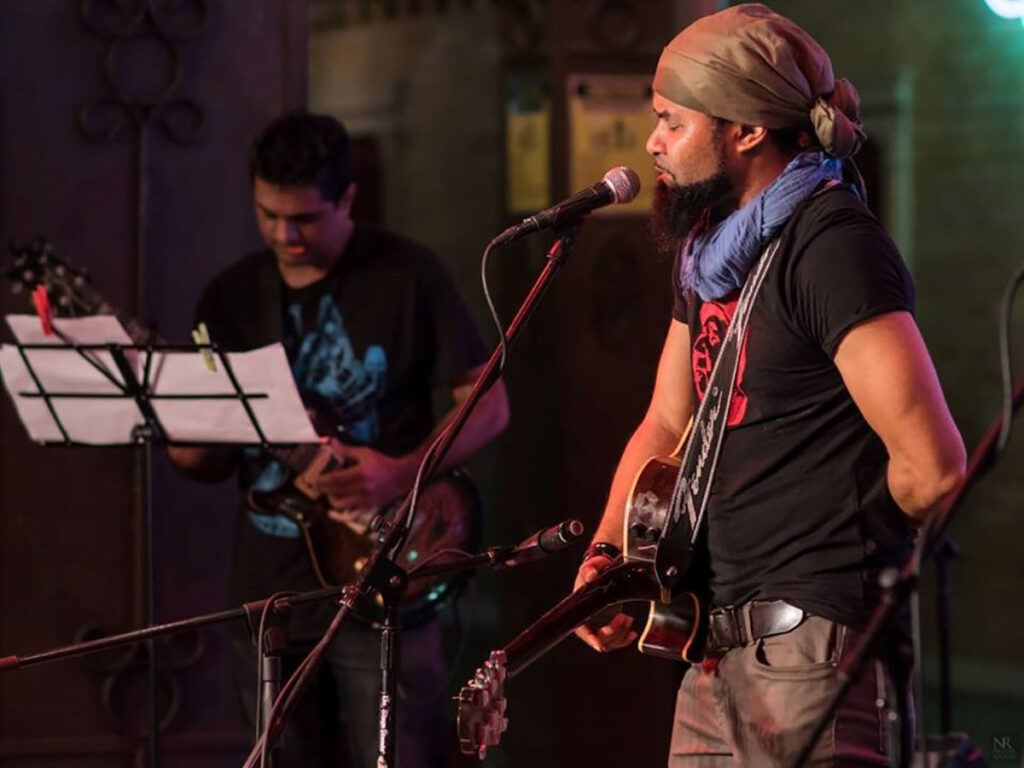
Rubadiri also used his space as a newspaper columnist and his Facebook page to articulate alternatives, to uncover hidden histories, to celebrate marginalized heroes, ideas, and communities, and to express frustration about the elite’s continuing insensitivity towards culture and their apparent lack of consciousness for the valuable work the Golden Age generation has done – and how the creative industries can make Trinidad and Tobago richer and more humane- a healthier space that can spark better living and thinking in its people.
His words have reached thousands- but how many of the elites have listened? The graciousness of the man sees him remember the few elites that saw the value in the country’s artists and have created spaces for them to build their skills as artists. “We have to honour those that crossed over the borders to change the paradigm, names like Robert Amar who created the Caribbean Sound Basin studio that ushered in the modern age of T&T music,” he says.
Most of Rubadiri’s smaller paintings are under TT$10,000 dollars or US$ 1,483.11. The mid-size pieces hover between TT$30,000 – TT$65,000(US$4,049.44- US$9553.) Two of the painter’s most prized pieces costs TT$77,000 or US$11,419.93 and TT$101,000 or US$14,979.38.
Artist, musician, singer, curator, mas and carnival man, educator, spiritualist, Rubadiri spent years loving and working in the corridors of the creative industry, to primarily uplift lives and to literally save generations from being lost in the jungle of convolution that is now our world.
Rubadiri has done this all his life and has a body of work in various genres of arts and culture to prove his unrepentant love for art and the creative industry. His Facebook page is a virtual space for all things art and culture. Take a dive into Rubadiri’s wonderful world of consciousness through art, mas and music, right here. http://rubadiri.org/ or here


